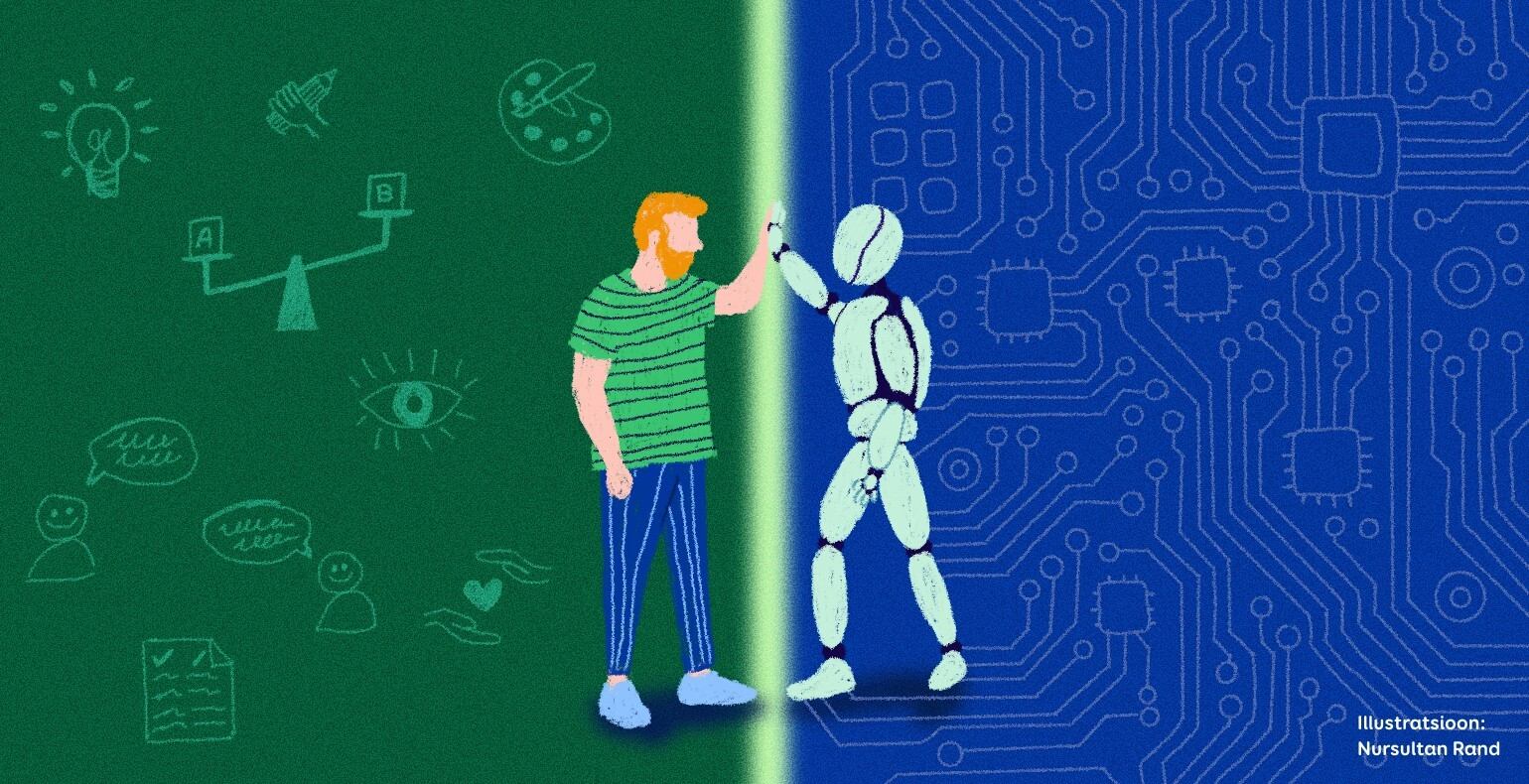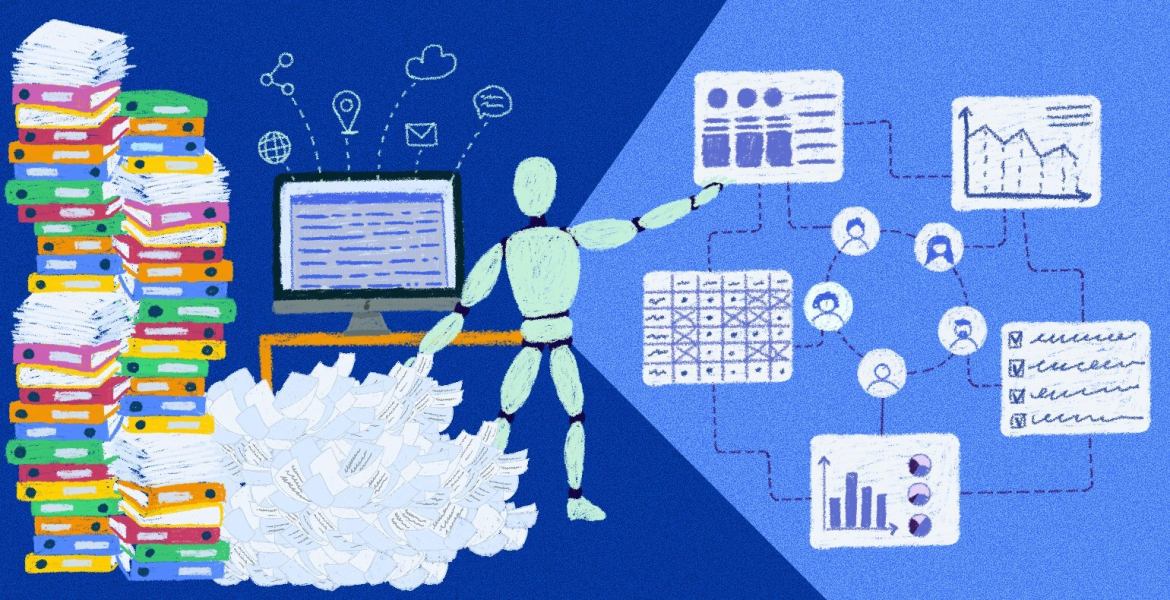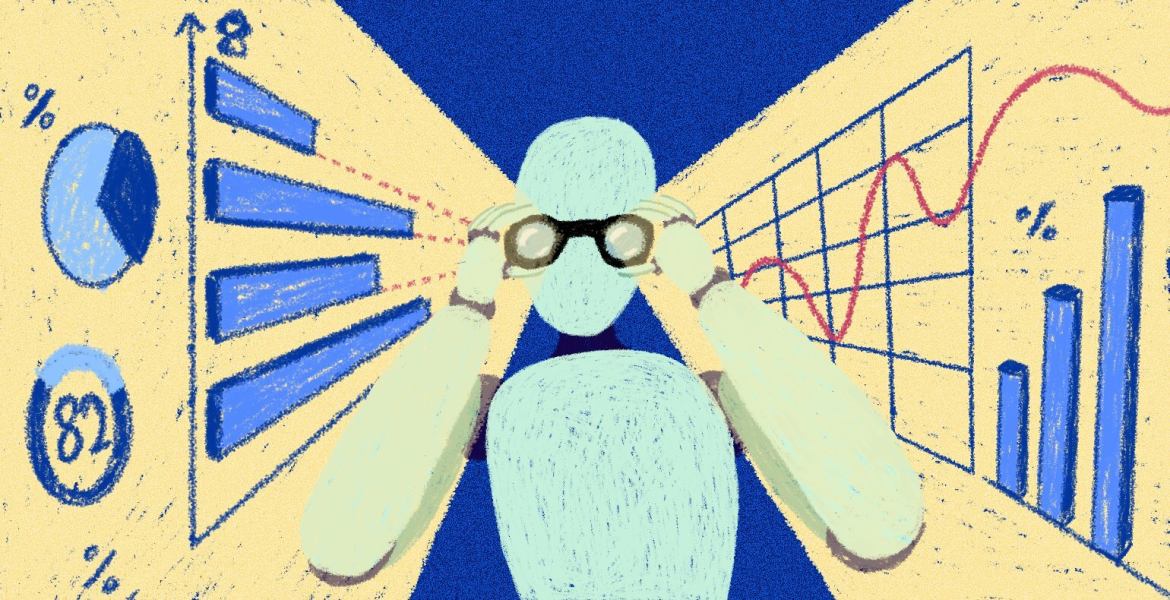How can companies benefit from machine-learning projects?
Artificial intelligence has quickly made its way into our daily services, making companies wonder how to best make use of this new technology in their own business. Here is an overview from our experts of the most popular uses for machine-learning along with practical examples.
Sometimes, people may have the erroneous idea that artificial intelligence is some sort of mystical black box that sits in the corner of an office, eats business problems for lunch, and then provides fully thought through solutions in return. In reality, artificial intelligence should be seen as part of a larger infrastructure that consists of data flows, algorithms, user interfaces and – most importantly – the users of the solution.
If you are interested in learning more about how machine-learning solutions can support your company, then you can find even more information and practical examples on the website of our affiliate company, Intelex Insight.
Most of the time, the goal is not to delegate decision-making to the machine, but to achieve cooperation between man and machine. While the machine may do a lot of the work in the person’s place and then provide suggestions, the final decisions are still made by a human being (or even if the decisions are made by the machine, man is responsible for those decisions and must therefore understand what kind of decisions the artificial intelligence is making and why). Read more from our earlier post “How can BI (Business Analytics) and AI (Artificial Intelligence) enhance business efficiency even further?”.
Regardless of the exact content, data projects follow the same steps in the grand scheme of things. Everything starts with setting a goal or, in other words, by thinking through what exactly needs to be achieved and how the benefits of the solution could be measured.
This is followed by data collection, pre-processing (which is generally a very time-consuming task) and modelling (and solving a single business problem can require multiple models). Finally, it must be ensured that the model actually works in practice as well, and then it must be integrated into the organisation’s workflow so that it does not just end up gathering dust somewhere.
Let us now take a closer look at the most popular use cases for machine-learning and what kinds of benefits they can bring to companies.
1. Optimisation
Optimisation essentially means creating an action plan where it is no longer possible to repeat a past pattern and, instead, various rules and limitations must be accounted for. A classic example of an optimisation task is putting together a lesson plan where you must account for the schedules of the teachers and the students as well as for the availability of classrooms. The same principle is used to put together work schedules in organisations where it does not follow one simple pattern.
The rules of optimisation are divided into limitations that must be adhered to, and metrics (goals) that must be strived towards. For example, the limitations in trade transportation could be the capacity of a van and the driver’s working hours; the goals however could be to deliver the maximum amount of goods possible by the end of the day and minimising fuel consumption. In turn, limitations can also have varying degrees of strictness (i.e. limitations on working hours that are based in law and cannot be violated, and the preferences of the personnel that should be taken into consideration, if possible).
In general, the goal of the company is optimising costs, but it may also be flexibility and, through that, decreasing risks. Since manual optimisation is very time-consuming, then artificial intelligence can help save a lot of time here, especially if there is a need to make quick changes and to re-optimise plans.
With optimisation tasks, we might not be able to find a perfect solution. But one that is nearly good enough and adheres to the limitations is enough.
Examples of optimisation projects:
- personnel schedules;
- the layout of goods in a warehouse or in the cargo space of a truck;
- the layout of products in a store;
- the trajectory of vehicles (logistics);
- the work schedule of industrial equipment (which machines will work on materials in what order);
- cutting raw material with minimal residue;
- rescheduling the above plans constantly with minimal changes as any new conditions pop up;
- planning the journey of public transportation users;
- dividing people into groups;
- contact suggestions based on available time slots (matchmaking);
- contact suggestions based on profiles (matchmaking);
- diversifying search results.
2. Recognition and predictions
Although we can never know the future for certain, we can predict various future scenarios of different probabilities. Knowing the probability allows us to give our best to achieve the best possible result for us.
When analysing time series, the numerical value of something in the future is predicted by taking into account the past values of the same series and other factors. For example, we can predict the sales revenue of next year by accounting for the sales figures of previous years and other factors that affect sales such as campaigns, holidays, weather, inflation, trends etc.
How well something can be predicted is dependent on how well be understand how the system works, how many variables the system is affected by, how regular the patterns in historical data are, and how much future predictions affect the system itself (for example, stock prices are strongly affected by the prognoses made by analysts).
Expert evaluations and statistical methods can also be used to make predictions. Most of the time, the best result can be achieved by combining both: an expert helps put together the model, the machine generates the predictions, and finally, the expert interprets and corrects the results.
Sometimes, very simple methods are enough to make predictions, such as calculating the historical average. Other times, more complex models need to be applied that account for patterns in historical data or how the observable size is connected to other processes.
One simple method for better understanding a time series – like monthly revenue – is to divide it into a trend, seasonal fluctuation, and noise. The trend will show the general direction of the change, such as sales increasing by about 15% every year. Seasonality will show how revenue is dependent on some kind of periodical fluctuation, such as the day of the week (people buy more on Saturdays and Sundays) or season (revenue is bigger in the summer).
Sometimes, seasonality can be complex – for example, the second Monday of every month could be an important factor but it is a moving date. Noise will show fluctuations that are hard to predict, such as the impact of COVID-related limitations.
With a regression analysis, we are predicting a changing variable – for example, how many more minutes will it take for the taxi to arrive. It is important to keep in mind that a statistical model is always a simplification of the world. A statistical model does not generate a single value, but a probability distribution from which it then picks the most likely value and presents it to the end users as a single number.
A good model will provide us with a result that is as accurate as possible with as little complexity as possible, meaning that it uses as few parameters as possible.
With classification, we teach the machine to classify objects according to specified characteristics – for example, whether the picture is of a cat or a dog.
If with supervised learning we already know the desired result, then with unsupervised learning we do not. For example, we can let the machine segment a company’s clients based on client data and purchasing history without having any idea what kinds of groups will result from this.
Algorithms can make two types of mistakes during classification: they can place an object into a group where it does not belong or not place an object into that group that does belong there. These mistakes can have different repercussions.
Let us suppose that we are using the algorithm to predict which students may start exhibiting signs of learning disabilities. If the algorithm accidentally places a student into the risk group that does not end up showing signs of struggling, then that is likely not a very big problem.
But if the algorithm does not identify a student who actually does end up struggling, then that may have much more serious consequences. To avoid this happening, we can for example decide that every student who has more than a 25% probability of developing learning disabilities should be classified as belonging to the risk group. .
Examples of projects
Recognition:
- classification: classifying customer appeals or feedback and directing them to the correct department;
- recognising faulty raw material, for example in the wood industry;
- recognising wear, malfunctions, or human error from a picture, video, or other signal;
- recognising other anomalies (e.g. the theft of fuel in a company with a machine park).
Prediction:
Predicting timing:
- predicting the maintenance intervals of machines, buildings, and roads (when do they need maintenance works);
Predicting volumes:
- the sales turnover of a store across products (so that the shelves do not end up empty and the products do not spoil or just collect dust);
- raw material needs in production;
- predicting the required amount of spare parts for maintenance (so that spare parts that have a longer delivery time would be delivered by the time they may be needed);
Predicting finances:
- predicting a company’s turnover;
- predicting raw material changes;
Predicting time expenditure:
- predicting the time expenditure of supplying or transportation, or the arrival times of products, raw materials, or spare parts (e.g. ensuring that new products arrive on the store shelves once the previous batch runs out. This is a separate task from predicting the required amount of product/stock.
Predicting loads:
- predicting the workloads of checkout tills or customer service employees;
- predicting the workloads of machines and vehicles;
Prediction and planning together:
- predicting the load and volume of potential customer orders and ensuring the flexibility or availability of free resources to fulfil those orders via planning so that the company would be able to accept customers with these kinds of urgent needs for a good price in-between other orders.
A specific example of multiple prediction and planning tasks that have been combined with each other:
„My company deals in food wholesale. I need to know when to place an order for new stock. If I place the order too late, then I will run out of stock and my customers will be dissatisfied. If I place the order too soon, then the food will spoil and my head of finances will be dissatisfied.“
- How long is the stock good for? (known in advance)
- How much will I sell in the near future? (prediction task)
- How quickly will the ordered stock arrive? (prediction task)
- How much to order at once and how often to ensure minimal transportation costs? (optimisation task)
3. Text processing
A classic example of text processing is search engines and here, we do not just mean Google, but all kinds of possible search engines on websites and document databases.
If in the past, machines could only find the word being searched for in texts or, in better cases, the synonyms of that word as well, then modern search engines can find answers at a level that matches the meaning of the question.
Chatbots are the next step developed after search engines. They conduct a search in the background and use the results of that search as input for their answers. It is also possible to train chatbots to answer in a specific, predetermined style and using a specific terminology by feeding them example texts.
Text processing is also required for the diversification of search results (e.g. so that an event platform does not only recommend events of one type to the user, but various types) and also for providing personalised contact recommendations on platforms that calculate the similarities and differences between user profiles and then match them.
Examples of text processing:
- chatbots;
- automated customer support;
- creating an FAQ by clustering earlier questions (the algorithm will identify repeated questions that are at the same time as diverse as possible);
- a search engine combined with a feedback form (before sending the question, the bot can suggest looking up a similar question in the FAQ);
- creating a summary of discussions and highlighting the positions that differed from each other the most;
- identifying similar products based on their descriptions and recommending them;
- automatically directing customer appeals to the correct departments;
- automatically identifying which unanswered letters are the most important;
- diversifying search results;
- contact suggestions based on the content of the user’s own profile.
Although machine-learning may seem complex at first, it is not something to be afraid of. Instead, it should be seen as an opportunity for companies that enables them to carry out various activities much more efficiently than before, to increase productivity, and to set new goals.
The first step in data projects is to create an overview of what kind of data already exists in the company and what kind of value can be created by using them. Experienced specialists can provide valuable help here and guide towards the next steps. If you wish to discuss the options available for implementing machine-learning in your company, get in touch with the CEO of our affiliate company Intelex Insight, Kaur.
Read more: Business Intelligence and Machine-Learning









